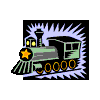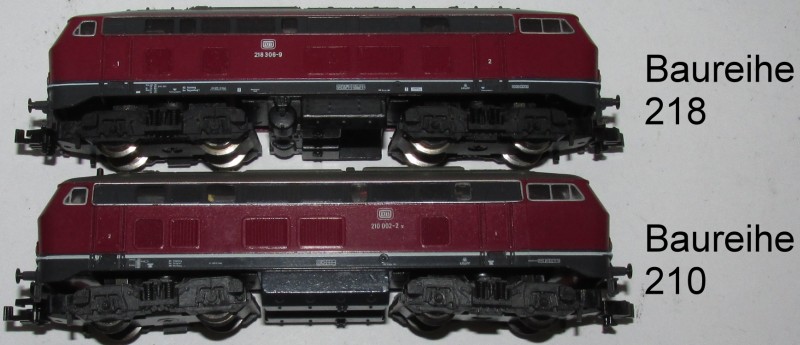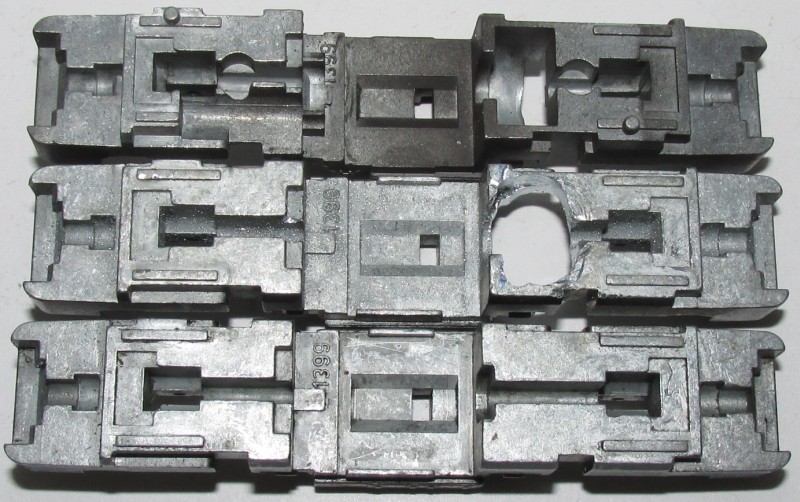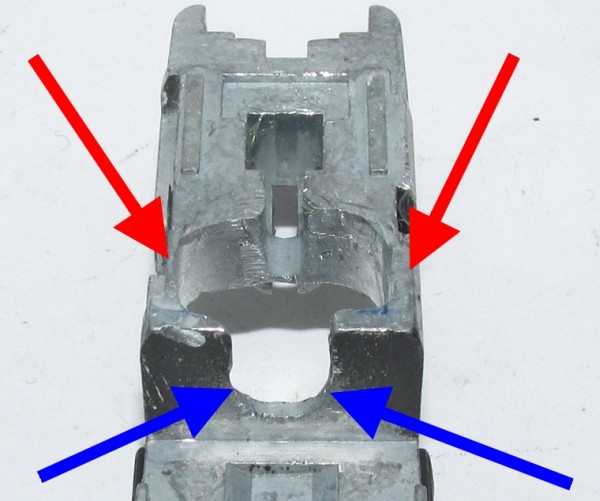Tipps & Tricks:
Einbau einer Schwungmasse in eine Fleischmann 210 /
Installation of a flywheel into an Fleischmann series 210

Tipps & Tricks:
|

|
 |
 |

 Als erstes werden nun beide Loks zerlegt. Dabei sollte man sich die Lage der Drehgestelle der alten Lok merken, da die Kontakte der Drehgestelle unterschiedlich angeordnet sind. Ansonsten fährt die Lok nachher verkehrt herum. Nun ist erst einmal handwerkliche Arbeit angesagt: Der Fahrrahmen der 210 muss ausgefäst werden, um Platz für die Schwungmasse zu schaffen. Man kann dazu den Fahrrahmen ganz gut in Höhe des (zu polsternden) Tanks in einen Schraubstock einspannen. Als Vorlage für die anstehende Arbeit nimmt man sich den Schwungmassen-Fahrrahmen einer 218. Abbildung 2 zeigt oben eine solche Vorlage, unten den unbehandelten Rahmen einer 210 und in der Mitte die fertige Fräsarbeit. Zum Glück sieht man das später von außen nicht mehr: |
 The first step is to disassemble both engines. Please remember the position of the bogies of the old engine, because the layout of the contacts of the two bogie gear boxes is different. If you change this, the engine will run in the wrong direction. Now it's time for bigger work: you have to cut out the loco chassis so that there's place enough for the flywheel. You can clamp the chassis on heigth of the tank (has to be upholstered) into a vice. Use the chassis of the "flywheel"-218 as a model. The next picture shows such a chassis on top, the bottom chassis is the original one of a 210 and in the mid is my work's result. It's good that you don't see this anymore after the body is on its chassis: |

 Mit einem Fräsaufsatz auf eine Mini-Bohrmaschine war es jedoch nicht getan. Erst mit "schwererem" Gerät (AEG Fixtec Plus 1010W) ging die Arbeit halbwegs schnell voran. |
 Using a mini drill machine was not a good choice. Visible success of my work was the result only as I used a "slightly" bigger machine (AEG Fixtec Plus 1010W). |

 |
 |

 |
 |

 |
 |

Fotos: Georg Blees mit Canon SX-160IS - all photos: Georg Blees with Canon SX-160IS
![]() zur Übersicht / overview
zur Übersicht / overview
![]()
![]() zum Seitenanfang / top
zum Seitenanfang / top
![]()
erstellt von / created by: Georg Blees 10.04.2013; letzte Änderung / last modified: Georg Blees 01.08.2015